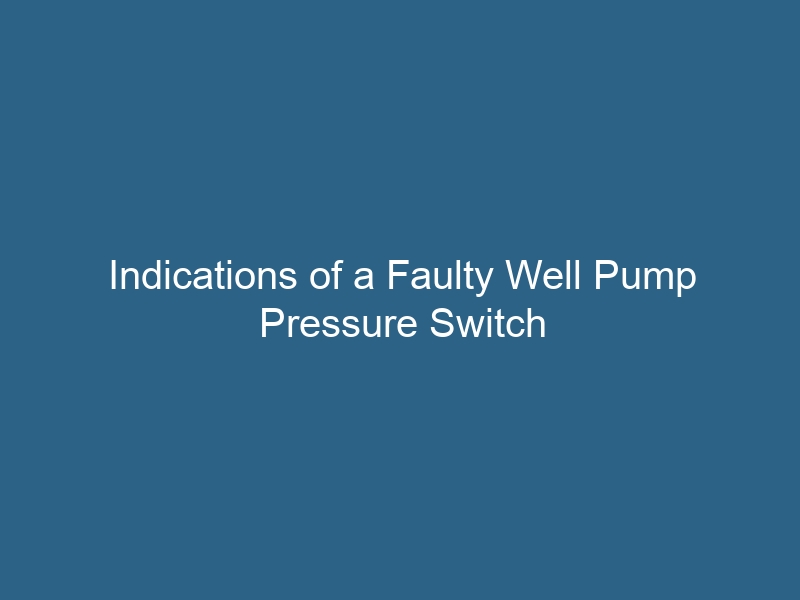Quck answer
A pressure switch to a well pump is gone when it fails to turn on or off the pump, causes the pump to run continuously, or results in low water pressure. Signs of a faulty pressure switch include frequent cycling of the pump, inconsistent water flow, or no water flow at all. To determine if the pressure switch is the issue, check the electrical connections, test the switch with a multimeter, and inspect for any visible damage. If the pressure switch is indeed faulty, it should be replaced to restore proper functioning of the well pump.
Rural homeowners who rely on well water are often familiar with the system, but may not have extensive knowledge about its mechanical components. One crucial component of a well system is the pressure switch, which controls when the well pump turns on and off. If the pressure switch malfunctions, it is a clear sign that there is a problem with the system.
The Role of the Pressure Switch
Wells have pumps that draw water from the well and into the bottom of a pressure tank. The top of the tank contains compressed air, which pushes the water through the pipes when a faucet is used. As water is consumed, the air pressure in the tank decreases. Once it reaches a certain level, the well pump is activated and starts running again.
The pressure switch acts as the supervisor for the pump. It sends a signal to the pump, instructing it when to turn on and off. As the pump operates and fills the tank, the pressure switch signals it to stop when the maximum air pressure is reached. When water is used and the pressure decreases, the switch signals the pump to turn on once it reaches the low pressure measurement determined by the switch settings.
Possible Causes of Pressure Switch Failure
The pressure switch relies on internal springs to function correctly, but these springs have a limited lifespan. Normal wear and tear can cause the springs to become loose and less effective. In humid areas, moisture can also damage the pressure switch. Additionally, issues with the electrical wiring connected to the switch, such as corroded wire ports, rusty contacts, or debris blockage, can lead to failure.
Indicators of Pressure Switch Failure
When there is a problem with the well system, it often manifests in issues with the water service inside the home. Changes in the operation of the well pump may also be noticeable. However, it is important to note that the issue could be with any of the well components. Specific signs that the pressure switch may be faulty include:
- The well pump continues running even after the pressure tank reaches its maximum pressure.
- Frequent cycling on and off of the well pump.
- The pump is running, but the pressure remains low.
- The pressure reaches the designated low measurement, but the pump does not start.
- No water is available, yet the pump does not activate.
What to Do
If you suspect a faulty pressure switch, it is advisable to consult a professional well technician to accurately diagnose the issue. Even if the problem is narrowed down to the pressure switch, determining the exact cause may not be immediately apparent. Working with pressure switches can be dangerous, as they are connected to the electrical system and are in close proximity to water, so it is best to leave the task to experienced professionals.
One simple test you can perform is to check the power source for the pressure switch. Ensure that the breaker is fully on to ensure the switch is receiving adequate power. If this does not resolve the problem, a professional can diagnose and repair the issue.


